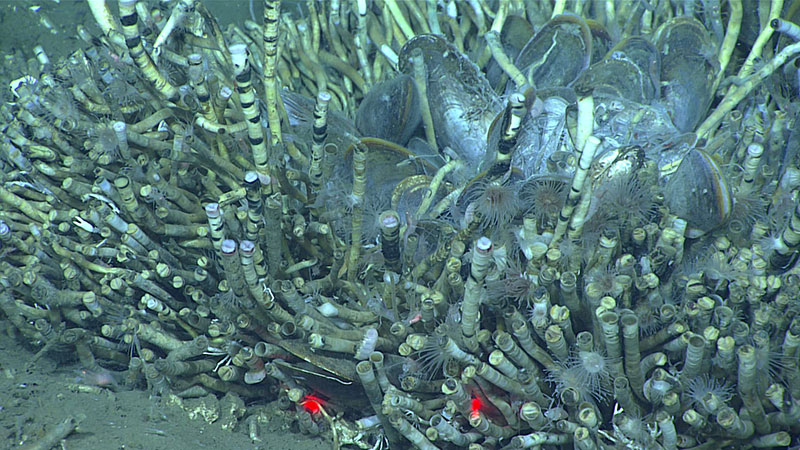December 6, 2020: Tubeworms

Image courtesy of the NOAA Office of Ocean Exploration and Research, Gulf of Mexico 2017. Download larger version (jpg, 1.2 MB).
During Dive 16 of the Gulf of Mexico 2017 expedition, the team targeted the western edge of Dauphin Dome, which had a number of Bureau of Ocean Energy Management seismic anomalies and water-column bubble targets detected by NOAA Ship Okeanos Explorer. We discovered at least 10 new methane seeps with small associated chemosynthetic communities — like the dense bushes of tubeworms shown here. At the seeps and within these bushes were a variety of organisms, including polychaete worms, squat lobsters, snails, mussels, zoanthids, ophiuroids, hydroids, and large swarms of copepods.
Watch a video of one of the “Tubeworm Metropolis” sites visited during the dive.